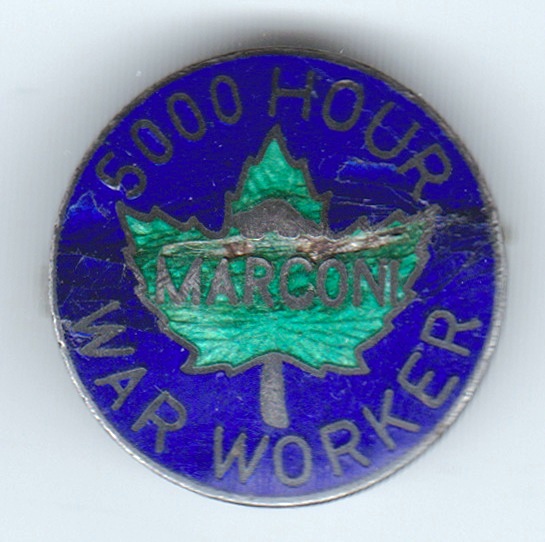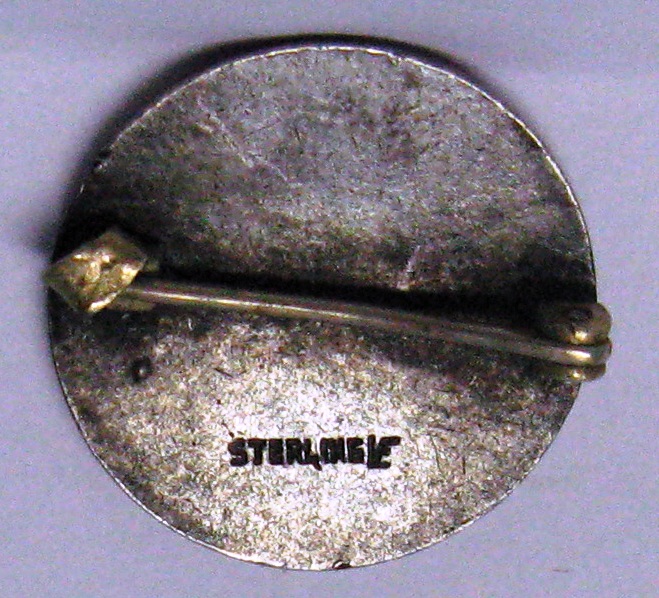| BRIEF HISTORY OF CANADIAN MARCONI |
| BRIEF HISTORY OF CANADIAN MARCONI |
THE BEGINNINGAn entire book could be written about the Canadian Marconi Company however in the interest of brevity, this summary will focus on the era of vacuum tube radio equipment.
The first permanent wireless station in Canada was the Glace Bay transatlantic station. Completed in December, 1902, it would eventually prove to be a financial drain on the company. Successful transatlantic two-way communication with Poldhu was still a few years down the road. Progress had been made equipping ships with wireless apparatus, so the Company decided to eliminate the experiments at the Glace Bay and Poldhu stations. The time had come to develop a new transatlantic service for shipping.
Many of the various steamship lines carried Marconi apparatus, including Cunard, White Star, Red Star and the American Line. It was advantageous for ships to be able to contact a shore station and alert the home office when they were due to arrive. In the event of mechanical trouble or an accident at sea, as more ships carried wireless, the probability increased greatly y of another vessel coming to their aid. By October of 1905 there were 74 passenger steamships carrying Marconi apparatus.
As business increased in Canada, a decision was made to create the Marconi Wireless Telegraph Company of Canada. Originally registered in Ontario on November 1, 1902, It obtained a Dominion Charter by a Special Act of Parliament on August 13, 1903.. The Company was originally owned almost entirely by Marconi's Wireless Telegraph Company, Limited of London, England.
Entrepreneur.com provides some excellent background [1] about the Marconi Company in its early days.
"As much as Guglielmo Marconi enjoyed individual success in Canada, he also found a government interested and willing to finance his work. The Marconi Company became incorporated in the center of Canada's emerging industrial heartland, the province of Ontario, under the name Marconi Wireless Telegraph Company of Canada Ltd. It was owned entirely by Marconi's London, England enterprises. In 1903, the Canadian Marconi operation was incorporated as a Dominion [national] corporation and at that time the Canadian government was granted rights to the Marconi patents. This enterprise grew out of Guglielmo Marconi's successful sending of a message across the Atlantic in 1901. In 1905, the government amended its Wireless Telegraphy Act to include possible broadcasting activities.
The Marconi Wireless Company of Canada then established itself at 173 William Street, Montreal. It was from this location the company launched the first radio private broadcasting station in Canada an experimental station call sign XWA (eXperimental Wireless Apparatus. It was renamed CFCF on November 4, 1920. Simultaneously, the company started to develop radio receiver technology at the same time. The plant manufactured and marketed receivers, tubes, all types of radio components. XWA was the station where the new technology was tested.
 |
| This beautifully engraved and scarce certificate was issued by the Marconi Wireless Telegraph Company of Canada in 1909. It was printed by the Globe Litho Company of New York and has an ornate border around it with a vignette two globes with telegraph transmission towers in the background. This item is hand signed by of the Company's Director and Secretary. (Image courtesy Scripophily.com) |
 |
| Canadian Marconi stock certificate circa 1903. |
The Canadian Marconi Company was also a part of Canadian television's prehistory. While John Logie Baird was experimenting with mechanical television in England and Philo T. Farnsworth and Vladimir K. Zworykin worked on it in the United States, the Marconi Company was active in Canada. Canadian Marconi experimented with television transmission briefly in 1923. Unfortunately, these operations were ordered closed by the Canadian government, since the government had no television policy. But the order did not deter CMC's overall interest in television [2]. Throughout the 1920s and the Depression years, CFCF-AM grew, providing the foundation and a platform for planning for television. In 1925, the company name changed its name to the Canadian Marconi Company. Canadian radio historians have headlined CFCF-AM with the preeminence of KDKA in Pittsburg the first commercially licensed station tin the US. By the 1930s, CMC was firmly established in three main areas: coast and beam stations, radio manufacturing and broadcasting.
Just prior to World War II, the Marconi company was ready to put its plans for television into action. It approached the Canadian federal government asking for a license to begin an experimental television station [3]. The company was the first to make such a request in Canada, but before a license could be approved by the government the war intervened. The advent of World War II changed the CMC direction. It became Canada's first vertically integrated manufacturer with the broadcasting and a production empire coming in the postwar era".
| Listing of Marconi locations in the UK. . Derived from The 1950 Marconi Review Edition 96 No. XIII |
| Listing of Marconi International locations, Derived from The 1950 Marconi Review Edition 96 No. XIII |
| Marconi Company organizational tree 1897 to 1917. |
WORLD WAR IIDuring World War II, the company underwent enormous expansion in order to build military communications equipment. CMC radio equipment found its way into Canada's Northwest Territories and Yukon Radio System and the Canadian Army. During WWII, Canadian Marconi was a key supplier of radio equipment to the Royal Canadian Navy and Department of National Defence in general. Their flagship products which persevered in the RCN for the next two decades were the CSR-5 receiver, the CM-11 transmitter/receiver and the PV-500 series of transmitters. The No 19 set Mk III and the 19 set linear amplifier were also built by Canadian Marconi. This military work continued in the post war period.
 |
| A lapel pin such as this was issued to wartime Canadian Marconi employees whose employment exceeded 2,500 hours. (E-bay photo) |
 |
| This is the 5,000 hour version of the lapel pin. (Image by André Desaulniers) |
 |
| Back of 5,000 hour lapel pin. (Image by André Desaulniers) |
As older divisions and products were phased out, new fields of endeavour were found. For example, CMC's beam service was expropriated by the Canadian Overseas Telecommunications corporation in 1950 and 1951 and the radio and television manufacturing division was closed down in 1966 due to increased foreign competition. Defence and aviation work became the order of the day and remain as the firm's main product,. Here is a point form history.• Originally funded in Montreal in 1903 as the ``Marconi Wireless Telegraph Company of Canada Inc.``,
* In 1948 English Electric purchased the UK based Marconi Company and in 1953 acquired 50.6% of Canadian Marconi Company. By 1968, English Electric was itself purchased by The General Electric Company PLC (GEC), which took control of the 50.6% share of CMC.
• Until 1999, it was known as CMC Canadian Marconi Company. English Electric Company from UK acquired a 50.6% ownership in 1953
• Acquired in 2000 by UK based BAE Systems
• Resold to ONEX/ONCAP Venture Capital around 2001.
• In 2002, the ONEX/ONCAP sells the Marconi Tactical Radio Business unit to the UK based Ultra Electronics Group. This becomes Ultra Electronics TCS. (TCS originally stands for Tactical Communication Systems)
• 2007: ONEX/ONCAP sells the remaining CMC Avionics/GPS Business to US company Esterline. The newly bought company is renamed as CMC-EsterlineCOMPANY HIGHLIGHTS
Here are some highlights from the company's vacuum tube era
1919 (Fall) Marconi decided to sell wireless apparatus to amateurs so a separate company called Scientific Experimenter Limited was formed.
1921 First home radio receivers in Canada.
1925 Company name changed to Canadian Marconi Company.
1931 Establishment of the Canadian radio network, which became the CBC.
1949 Frirst televisions buiilf for Emerson Electrc for sale in Canada.
1953 English Electric Company Limited of the U.K. acquired 50.6% of Canadian Marconi Company.
1956 First Canadian company to design a complete microwave radio relay system, the Mid-Canada Defence Line.
1957 First to develop an FM-CW Doppler radar for air navigation.
1960s - 1970s Focus on aircraft navigation, monitoring and display systems, tactical radio communications, radar systems and multi-processor telex switching systems.
2003 marked the centenary of the establishment of Canadian Marconi which at that time was known as The Marconi Wireless Telegraph Company of Canada.
Canadian Marconi was a colossal company in the 1960's and 1970's having employed some 12,000 people in Montreal !
 |
| The
National Research Council Time Signal is Canada's longest running radio
program. Heard every day since November 5, 1939, shortly before 13:00 Eastern
Time and across the CBC Radio One network, it lasts between 15 and 60 seconds,
ending exactly at 13:00. During standard time, the signal is sent at 13:00
Eastern Standard Time and during Daylight Saving Time, the signal is sent
at 13:00 Eastern Daylight Saving Time.
The signal is also heard on some stations of the Ici Radio-Canada Première network at 12:00 ET daily, particularly in Ontario, Quebec and the Maritime provinces. Many a listener has received the time signal on their Canadian Marconi radio, . |
FOOTNOTES:[1] Minor editing by Jerry Proc.
[2] In 1979, T. J. Allard chronicled the history of private broadcasting in Canada between the years 1918-1958.
[3] Stewart & Hull, 1994.
Contributions and Other Credits:1) Marconi History:http://www.cmcelectronics.ca/En/About/cmc_history_en.html
2) http://en.wikipedia.org/wiki/CMC_Electronicshttp://en.wikipedia.org/wiki/CMC_Electronics
3) Scripophily web page. http://www.scripophily.net/mawitecoofca.html
4) CMC logo http://www.geocities.com/aldoandr/Marconi/marconi.html
5) CFCF and KDKA http://en.wikipedia.org/wiki/KDKA_AM
6) http://www.entrepreneur.com/tradejournals/article/96454927.html
7) Gerry Hayward <gerryhayward(at)eastlink.ca>
8) Denis Couillard <Denis.Couillard(at)Ultra-TCS.com>
9) Lewis Bodkin 05bodkin555(at)mail.com>
10) Jim Kreuzer`s chapter on American Marconi from his article" Marconi -The Man and His Apparatus" , printed in the AWA Review vol. 9 1995
11) CBC Time signsal https://en.wikipedia.org/wiki/National_Research_Council_Time_Signal
12) André Desaulniers for the the 5000 hour lapel pin.Nov 18/23